By John Keller |
John Keller celebrated his 50-year art career with a retrospective exhibit in the Stevens Center for Art and Design gallery in November. The visual autobiography included pieces in diverse media from various seasons of Keller’s life — all focusing on beauty that is “often overlooked in the rush of life.” This feature includes a sampling of the extensive collection.
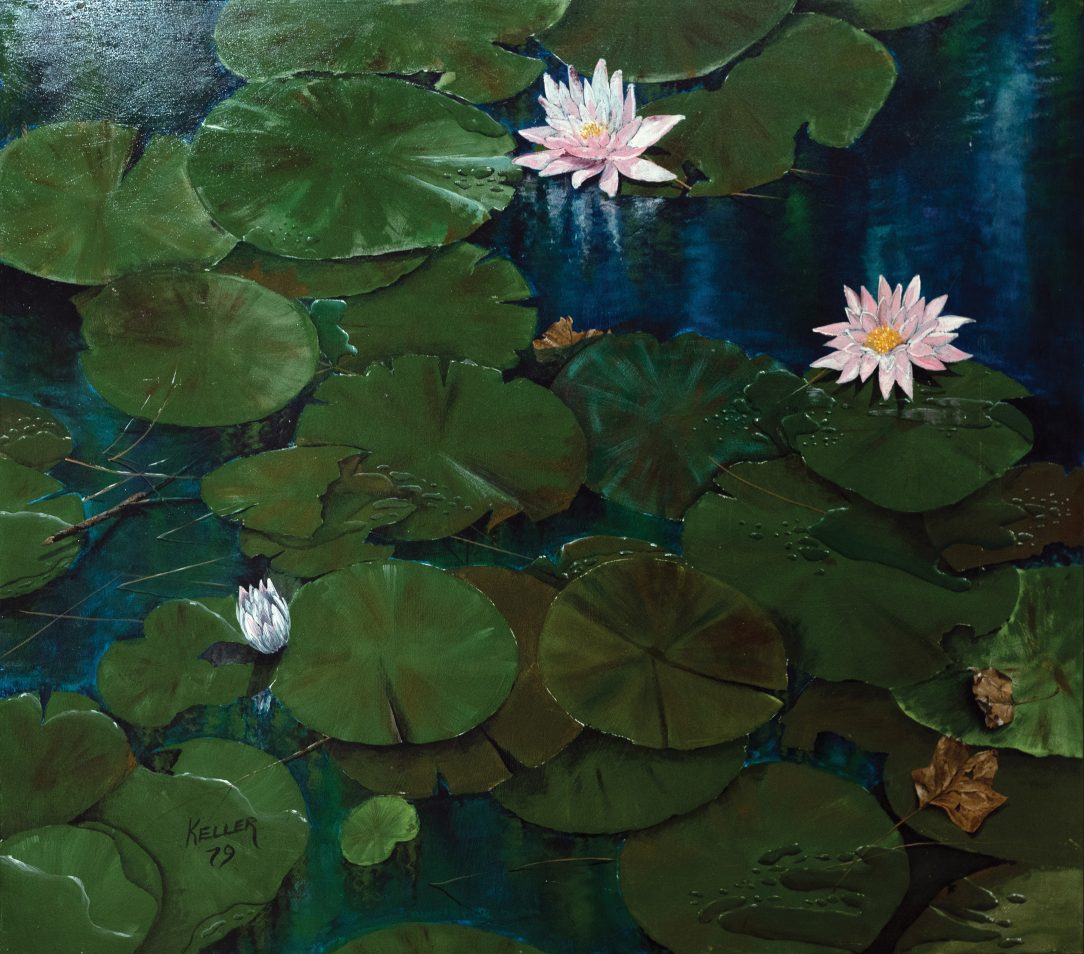
On the cover
John Keller painted "Water Lilies" for the American Heritage Building lobby shortly after joining the art faculty in 1978. His half-century career was celebrated in an exhibition in November 2022. This piece was used as the cover for the winter 2023 issue of Harding Magazine.
The walls of our home and my office were quite bare while these paintings hung in the exhibit. As I go about typical daily activities — at work or at home — my eyes will fall on a painting, and a flood of memories comes to mind. When an artist creates an image, whether realistic or abstract, he is sharing his thoughts with the viewers. In reading captions, you are sharing my memories.
As a visual autobiography, this collection is largely about beauty as I see it — often overlooked in the rush of life. Recognition of beauty is perhaps one of the more important means we have of seeing God and one of the higher forms of visual communication. Much of the modern period of art history has viewed beauty as trite, something to be avoided by any serious artist. Granted, the concept of beauty can become a cliche, but we must never lose our sensibility to beauty around us, no matter how small or fleeting it may seem.
Garden County High School in little Oshkosh, Nebraska, had no art teacher. My father, seeing that his son liked to draw, sold a cow from his small herd and purchased Art Instruction School’s correspondence course. My high school English teacher, Mrs. Jensen, commandeered a small closet that we converted to an art studio. I spent my senior year working on the art lessons during study hall.
With four years of high school drafting and architectural drawing courses and an interest in pursuing architecture professionally, I likely would have become an architect had Harding, or one of its sister colleges, offered a degree in architecture at the time.
Plan B was to attend York College and pursue a degree in art. Because York’s art courses were taught by a speech teacher, it was not until my junior year at Harding that I was able to take my first in-person art classes taught by actual art teachers.
In an academic advising session, Don Robinson suggested that printmaking might be a class to consider. Six years after graduation from Harding while teaching elementary and high school art in Henderson, Nebraska, I was offered a job teaching art at Harding. I believe that offer came primarily because I could teach printmaking, which Don Robinson needed to hand off as he became chair of the department. With my background in teaching elementary and high school art, I have taught art education courses and supervised our student teaching internships for 41 years.

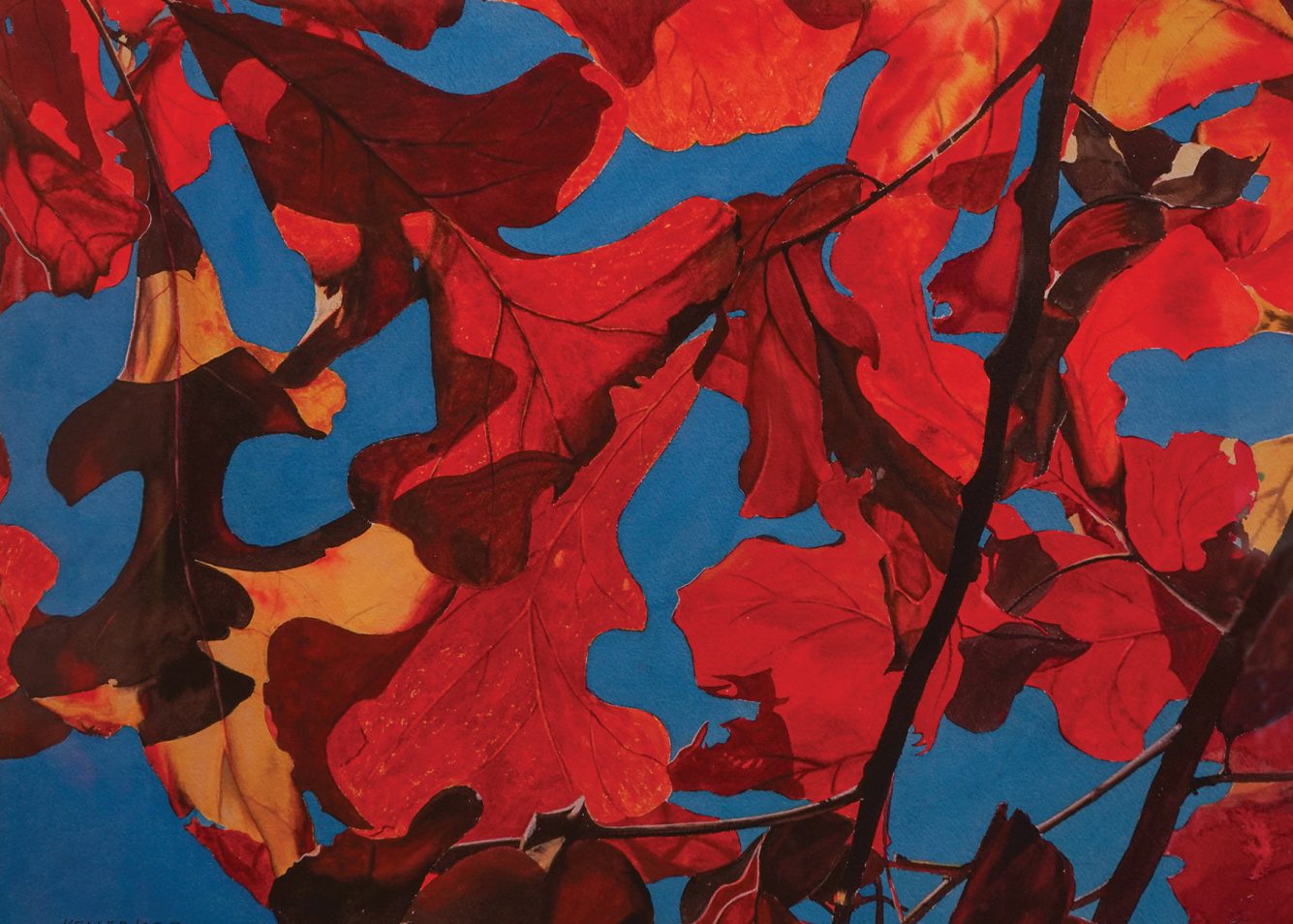
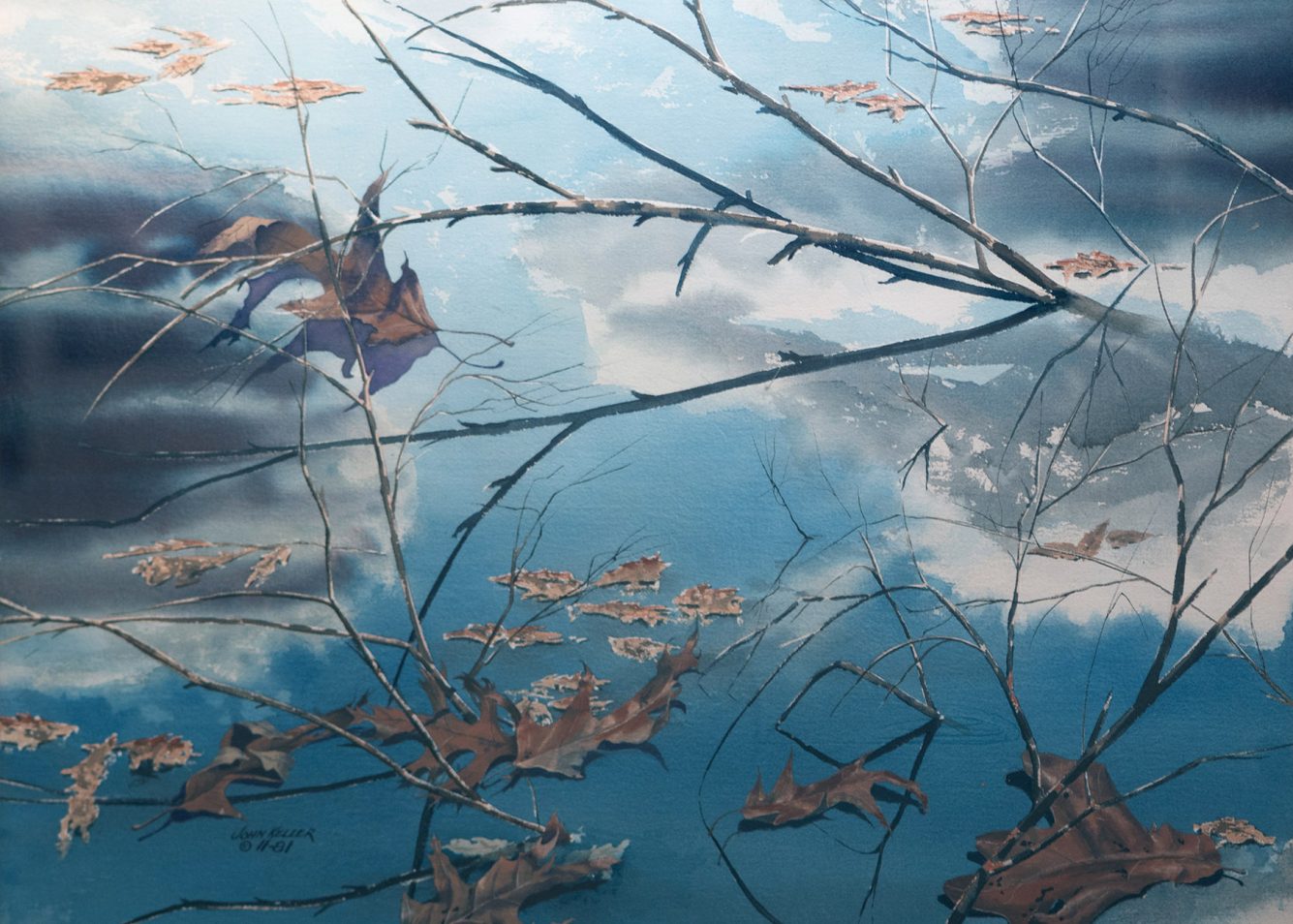
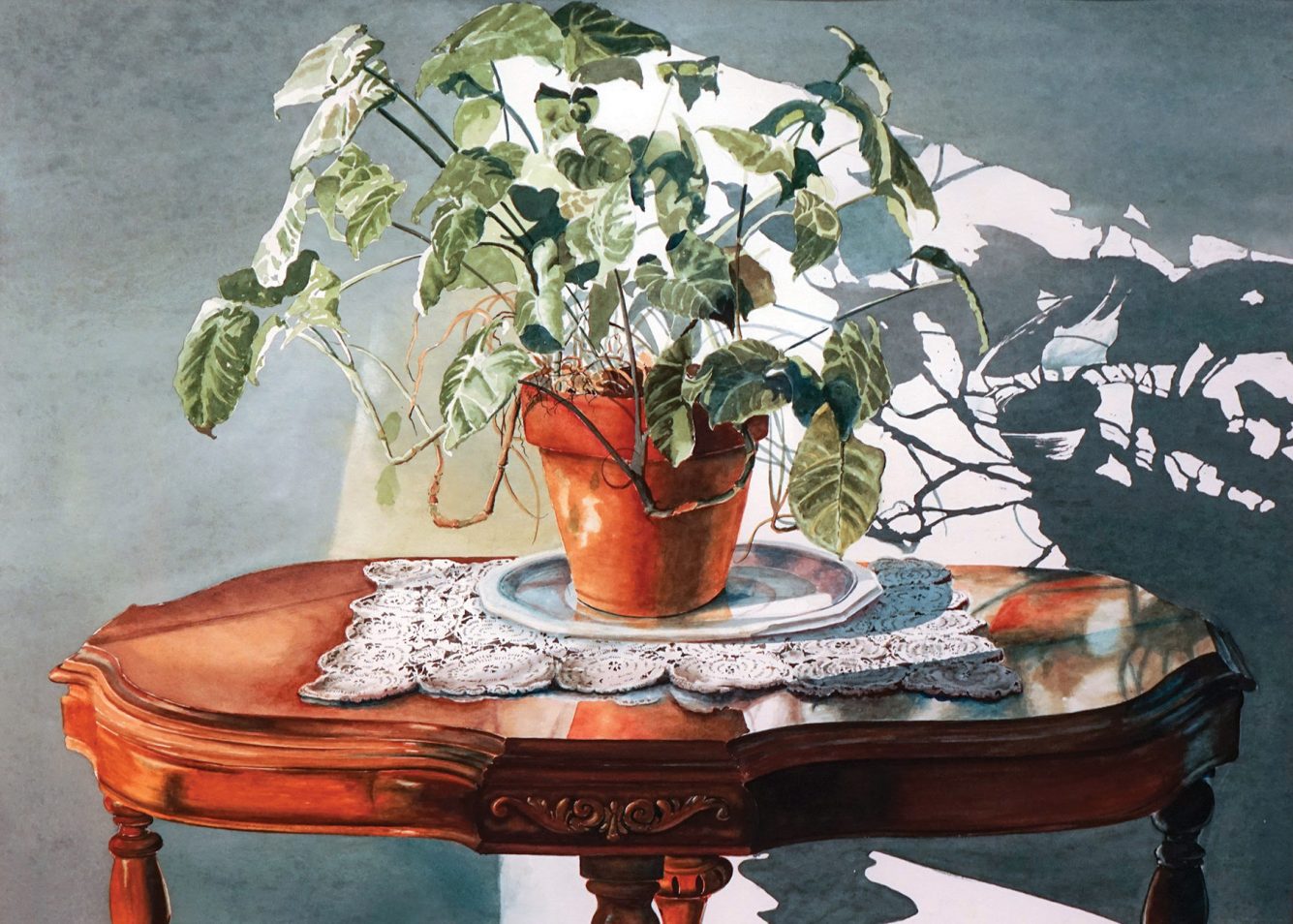
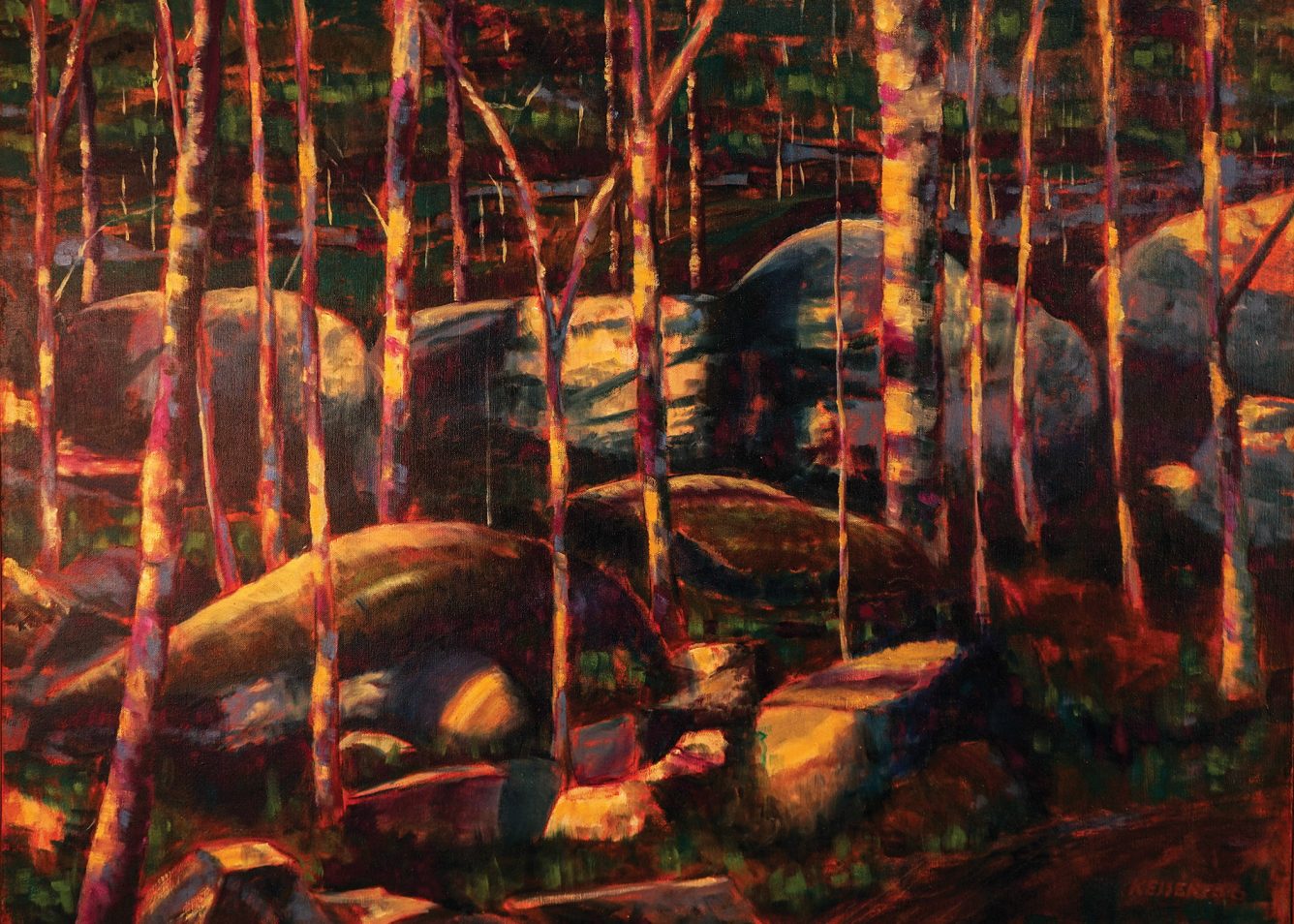
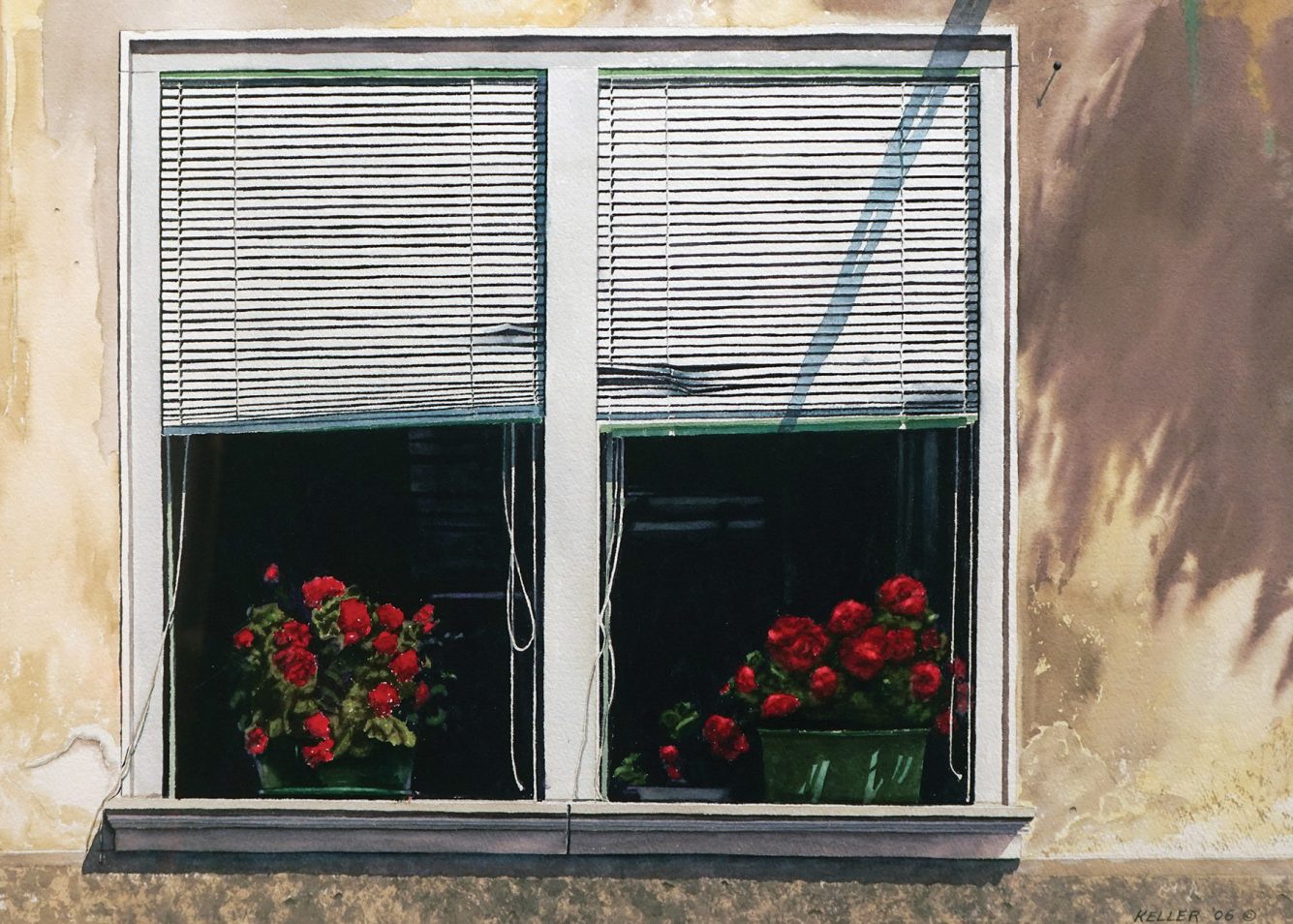

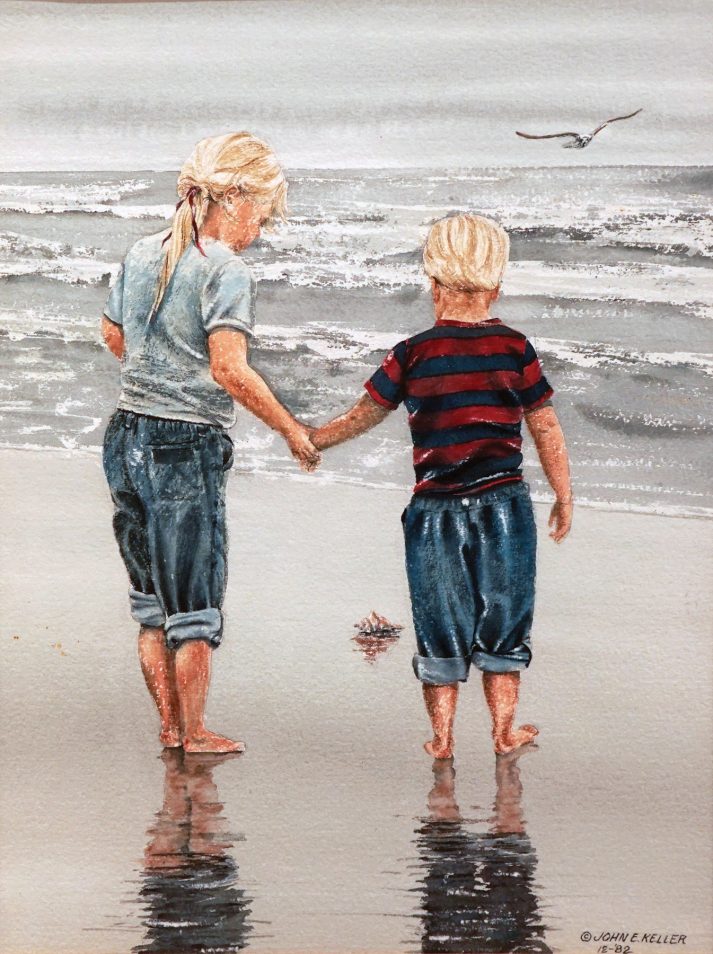
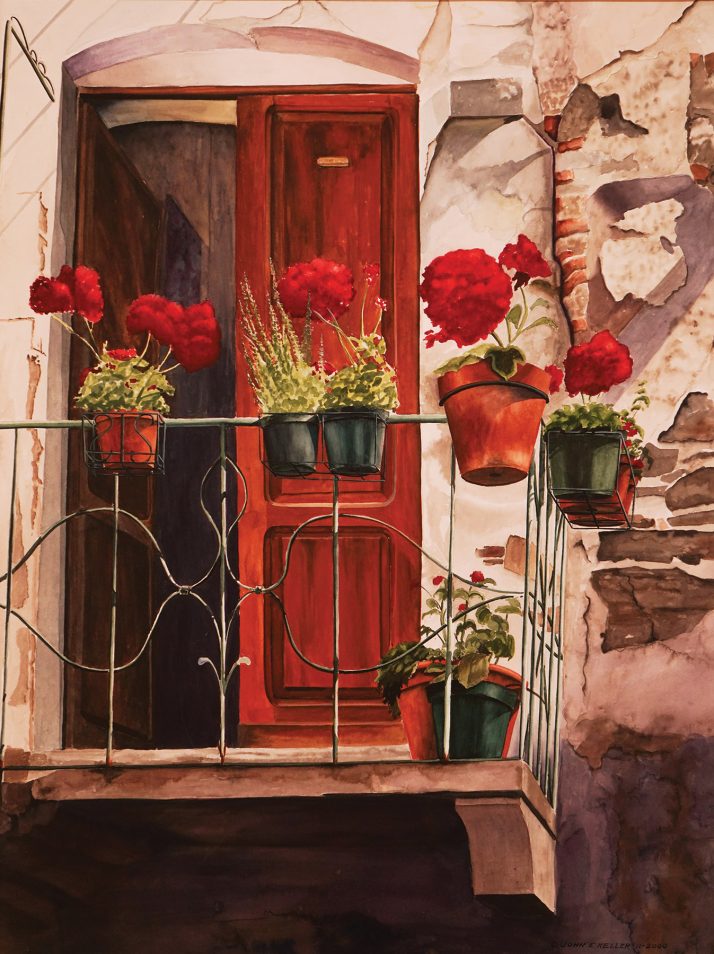

"Benson House Window Latch"
Watercolor, 1980
The Benson House became our gallery and offices in 1969, when we moved into the new art building. A small guest room became the art department’s front office. The west window’s peeling paint and the window latch fascinated me enough to make it the subject for this painting. When the Benson House was razed in 2000, I kept the window latch and attached it to the painting.
Dr. Benson’s master bathroom was my office from 1978-2000 when the current gallery space, offices and graphic design classrooms were added to the Stevens Center for Art and Design.
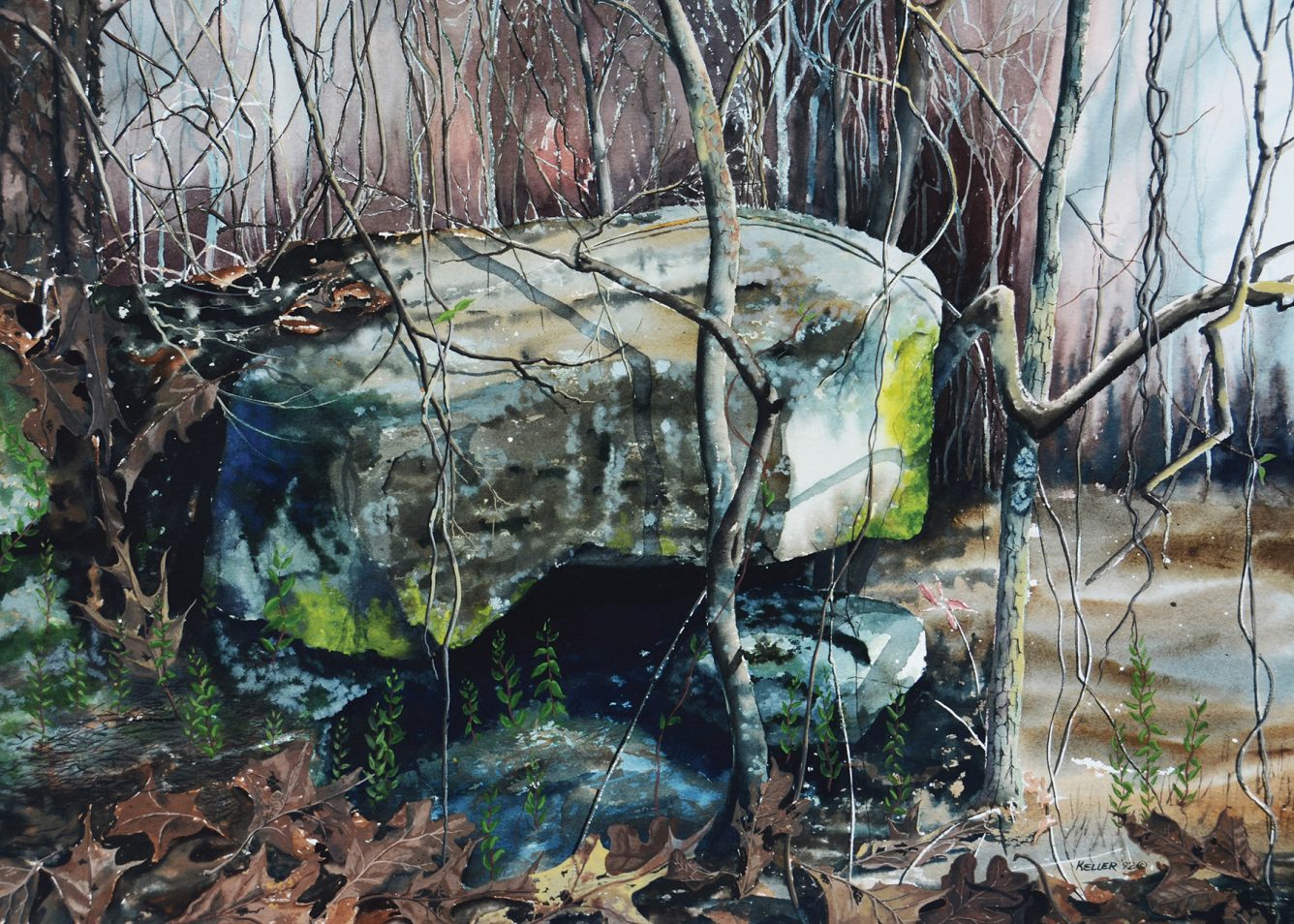
"Old Pangburn Highway"
Watercolor, 1992
This is one of the large boulders that had been moved aside to form a bermed section of the old Pangburn highway, the wagon trail between Searcy and Pangburn. The trail cuts across my property. An individual who collects old Arkansas maps supplied me with several copies of maps dating back to 1840 that include the old trail to Pangburn. I think, perhaps, I have the oldest man-made structure in White County running across my property.
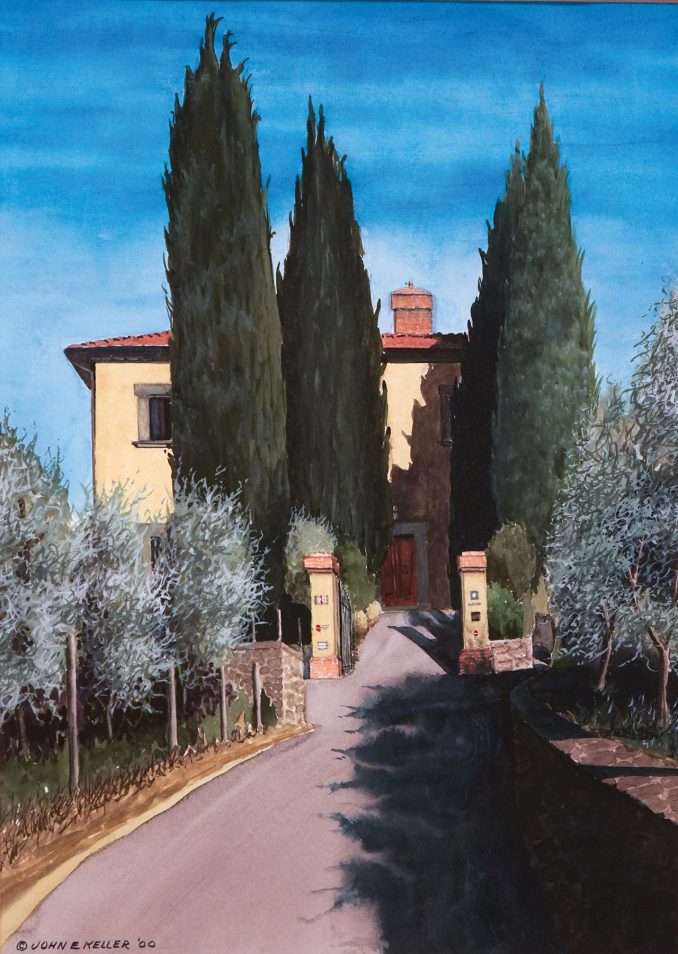
"Harding Villa"
Watercolor
The front gate from Via Triozzi with the facade of the Harding villa obscured by the cypress trees. This was used for the cover of Harding Magazine Spring 2006. The milky green color trees on the left and right are olive trees.
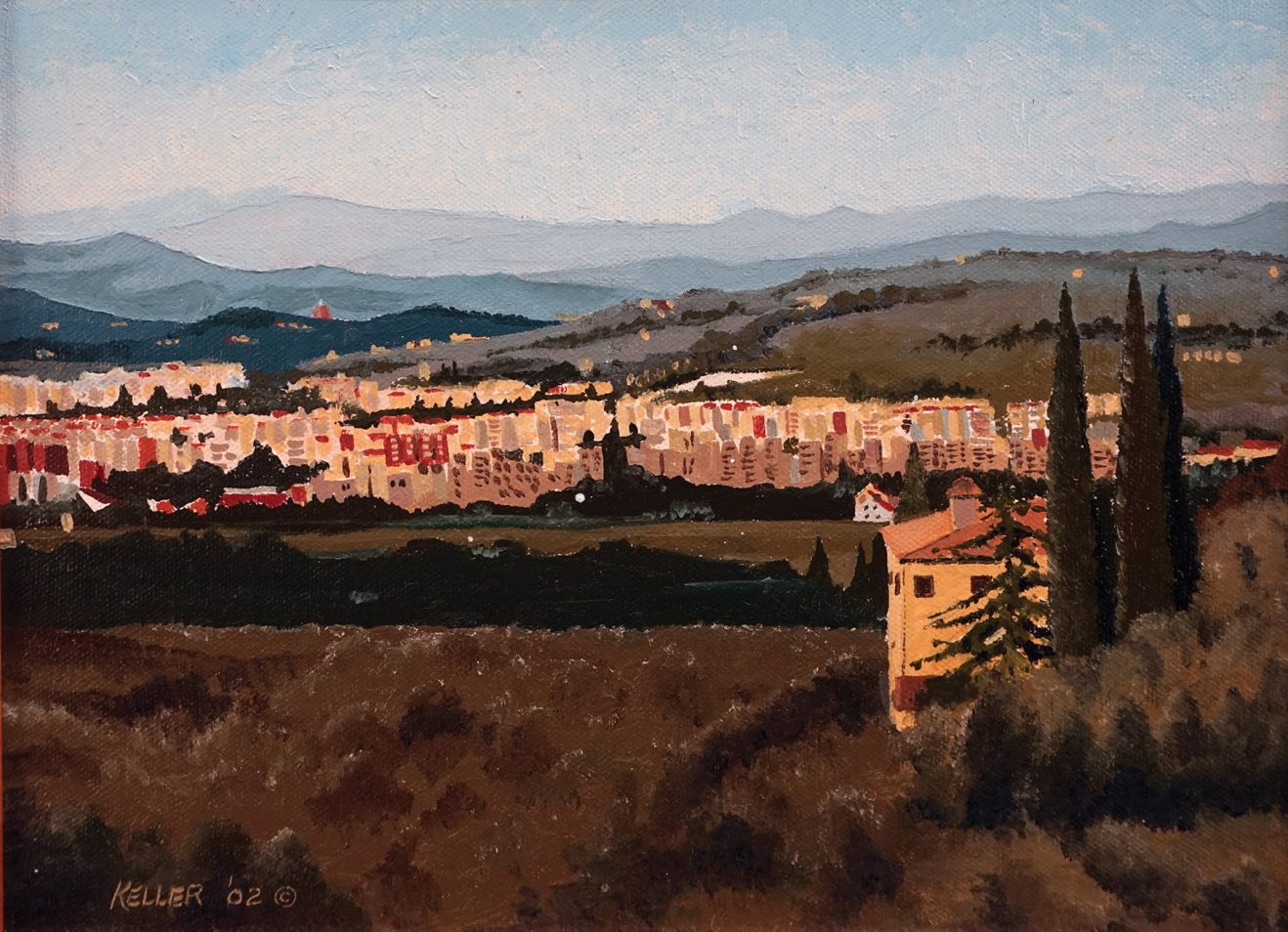
"Harding Villa"
Miscible Oil, 2002
From the villa you can see the red tiled roof of the Duomo, which is actually hidden by a hill from this vantage point. However, I took my artistic license to include Brunelleschi’s iconic dome.
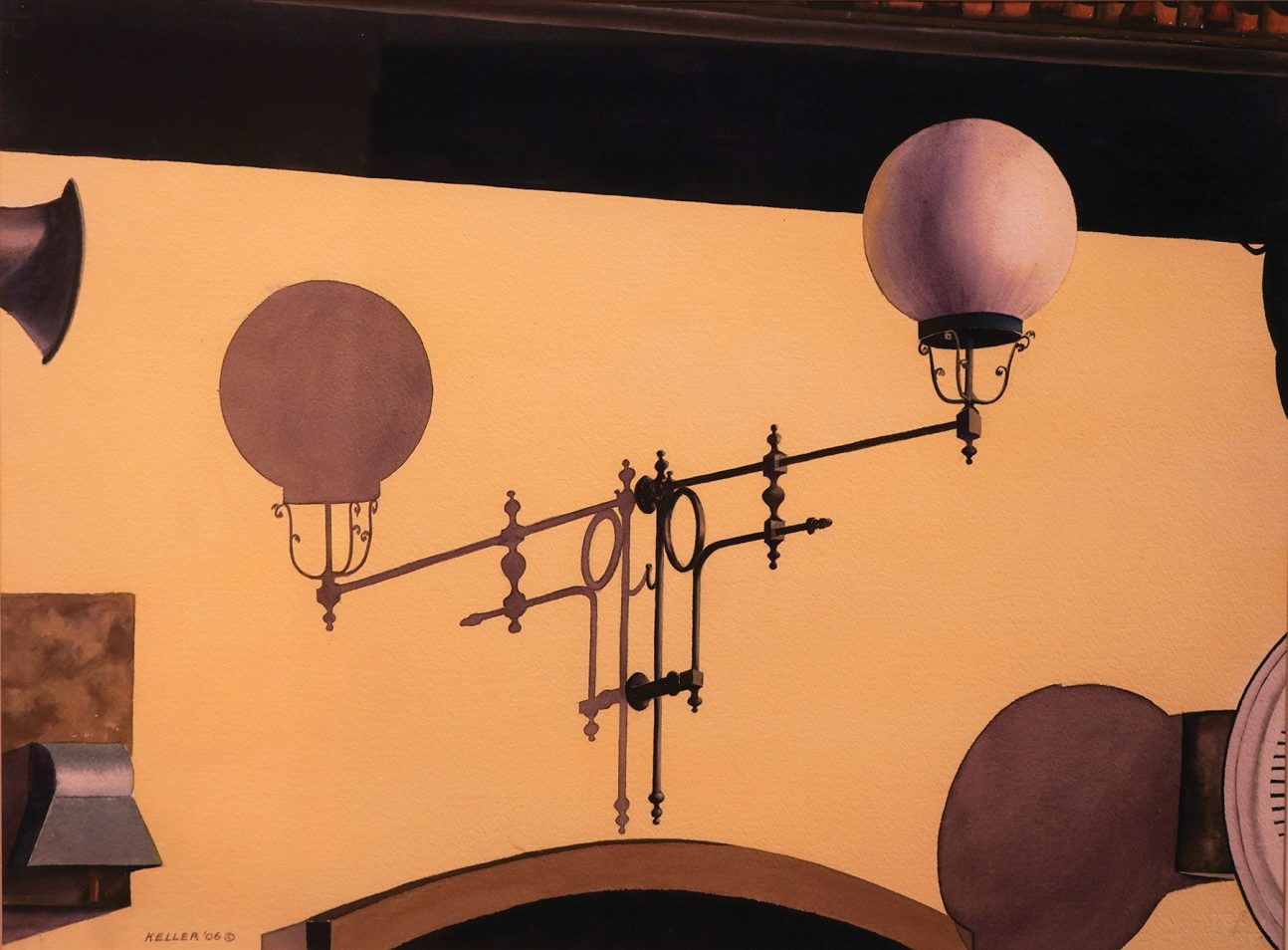
"Scandicci Lighting"
Watercolor, 2006
On an early Sunday morning, while riding on the bus through Scandicci, Italy, on our way to worship in Florence, I took a photograph of this lamp on a Tuscan-yellow wall. It was the cast shadow of the lamp that captured my attention. Of course, the title has a double meaning, alluding to the lamp itself as well as the case shadow from the early morning sun.

"View from Via di Triozzi"
Watercolor, 2005
One assignment for the watercolor class was to find a subject along Via Triozzi, down the hill from the villa. Sitting on the hillside above the rock wall at the edge of the road, I painted this scene. It includes pretty much everything the students would see on their walk up the hill from the bus stop. I have added a few more cypress trees than what were actually there as they are fun to paint.
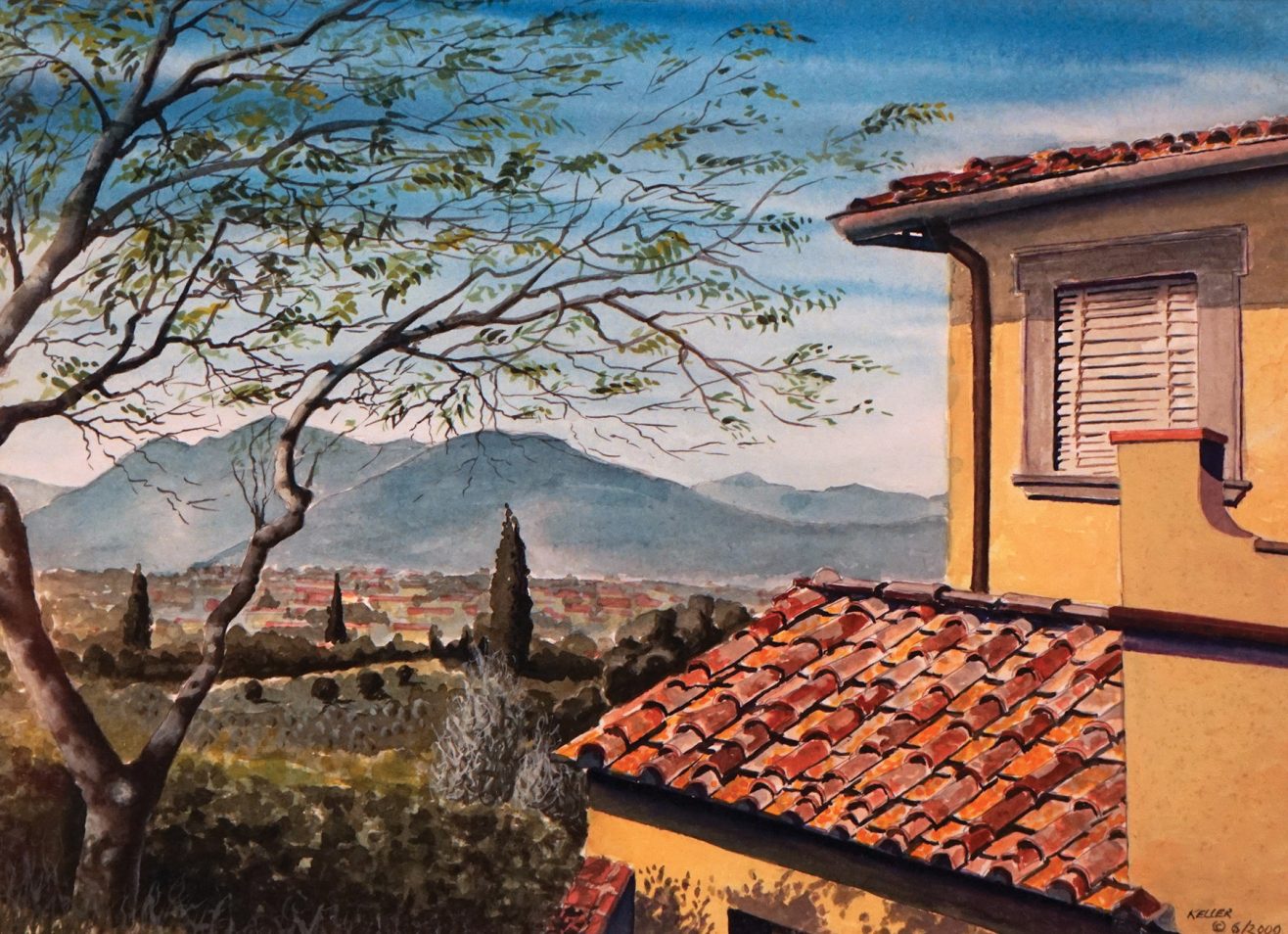
"Harding Villa"
Watercolor, 2000
This view of the villa was painted on location from the patio behind the villa, looking across Scandicci to the Tuscan mountains in the distance. The low roof is now the kitchen, but in the 15th century, before the villa was constructed, it was a little chapel beside Via di Triozzi.
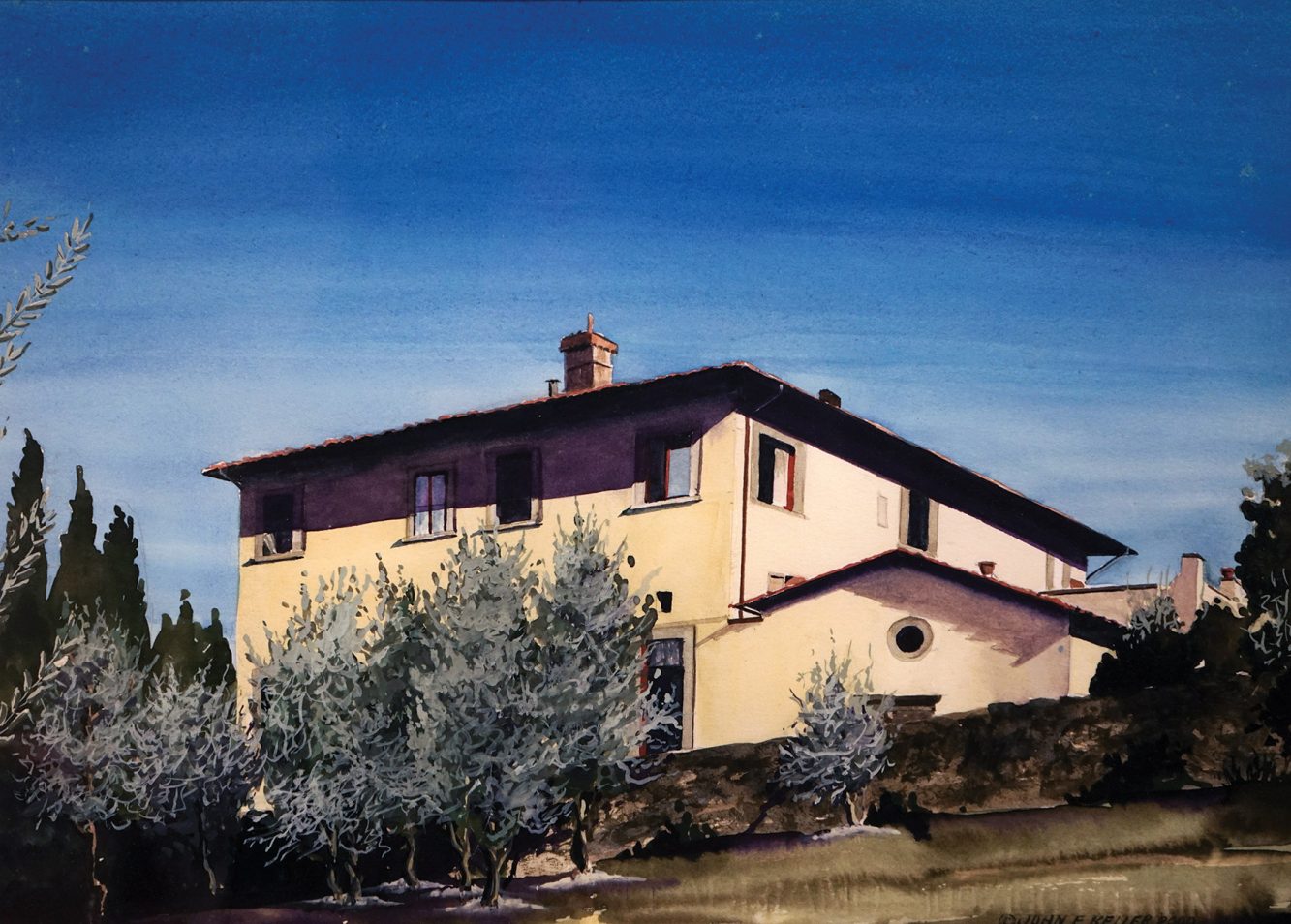
"Harding Villa"
Watercolor, 2000
The story is told that, during World War II, a German tank became wedged between the villa and the rock wall you can see in this painting. During the war, several families were living in the villa. Concerned that Allied bombers would take out the tank, the residents of the villa covered the tank with branches, even though they were sympathetic to the Allied forces. However, it was expedient to save their home.

"View from Castello di Porciono"
Watercolor, 2001
The inspiration for this painting came from photographs that I had taken while looking down from the crenelated roof of the castle. The little white specks in the field near the center of the painting are the sheep that earlier we had witnessed being herded to the field on that winding road.

"Lucca Duomo & Campanile"
Watercolor, 2005
This painting of Lucca’s Duomo, Catterdale di San Martino, was begun when my watercolor class had several hours to paint while visiting Lucca. I settled on this view of the bell tower from the fortified wall that still surrounds Lucca. The wall had been built to protect Lucca from a possible attack from nearby Firenze.

"Castello di Porciono"
Watercolor, 2005-06
The Summer 2005 HUF group consisted of 22 art majors plus 10 students with various majors, and three art and design faculty: Steve Choate, Beverly Austin and me. On our visit to Castello di Porciono, Robbie Shackelford had arranged for the watercolor class to have some time to paint. This painting was begun on location but completed at the villa. You can see one of the students working at his easel near the base of the castle.
There are two competing philosophies regarding photography as an art form. Originating around 1910, each had roots in debates that likely began soon after the first daguerreotypes were printed in the 1840s. Straight photography maintains that the art revolves around the skills needed to take a good photograph without having to manipulate it in what we now call post-processing. Pictorialism, on the other hand, maintains that the art revolves around what one can do with a photograph — when shooting or in the darkroom — to create content or emotion.
I believe that both philosophies have merit. The symmetrical designs in the Symmetree Series certainly fall into the realm of pictorialism as Photoshop has a myriad of tools that are fun to play with in creating something unique. I tend to avoid the tools that replicate other media or create special effects with the push of a few buttons. In sharing some of these images with my photography class, one of the students, remarked “Oh, symmetree!” I thanked her for the title of the series.



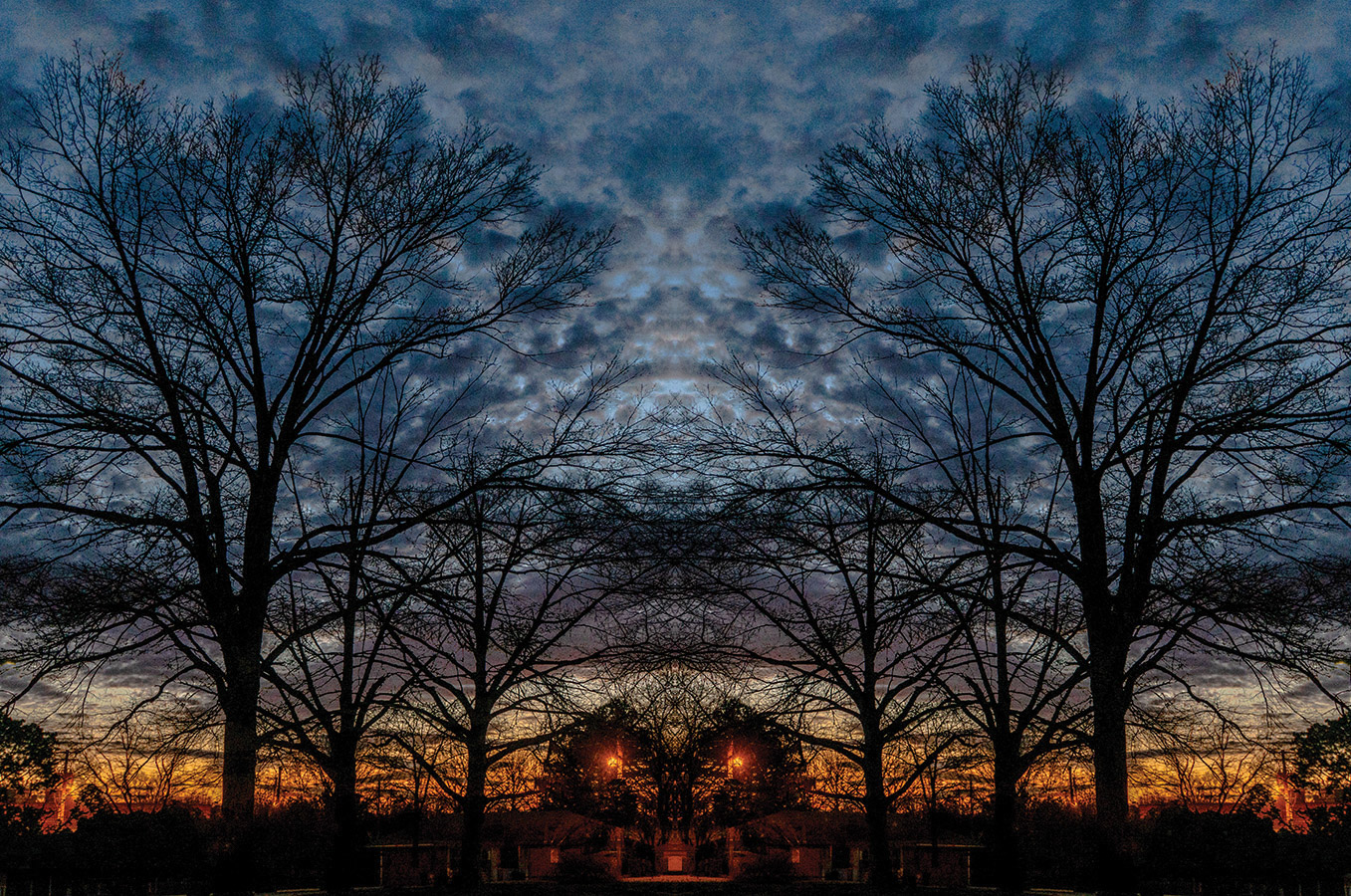



During Summer 2013 I taught watercolor in Hunan Province, China. They asked if I would rather visit a famous regional cave or Ziquejie Terraced Rice Fields, created during the Qin Dynasty, between 221-206 B.C. I’m a photographer with no lighting for large caves, so I opted for the rice fields. It was a four-hour drive on rural roads through a very remote area of China. I was shooting photographs out the window the entire trip.
The next day we rose before sunrise, ate breakfast and hiked among the rice fields for several hours. The only sounds were the gurgling of the spring water that fed the rice fields and the occasional rooster crowing. The ambience complemented by the fog hanging over the hills and the beauty of the contour terracing made it the most serenely beautiful place I have ever experienced.
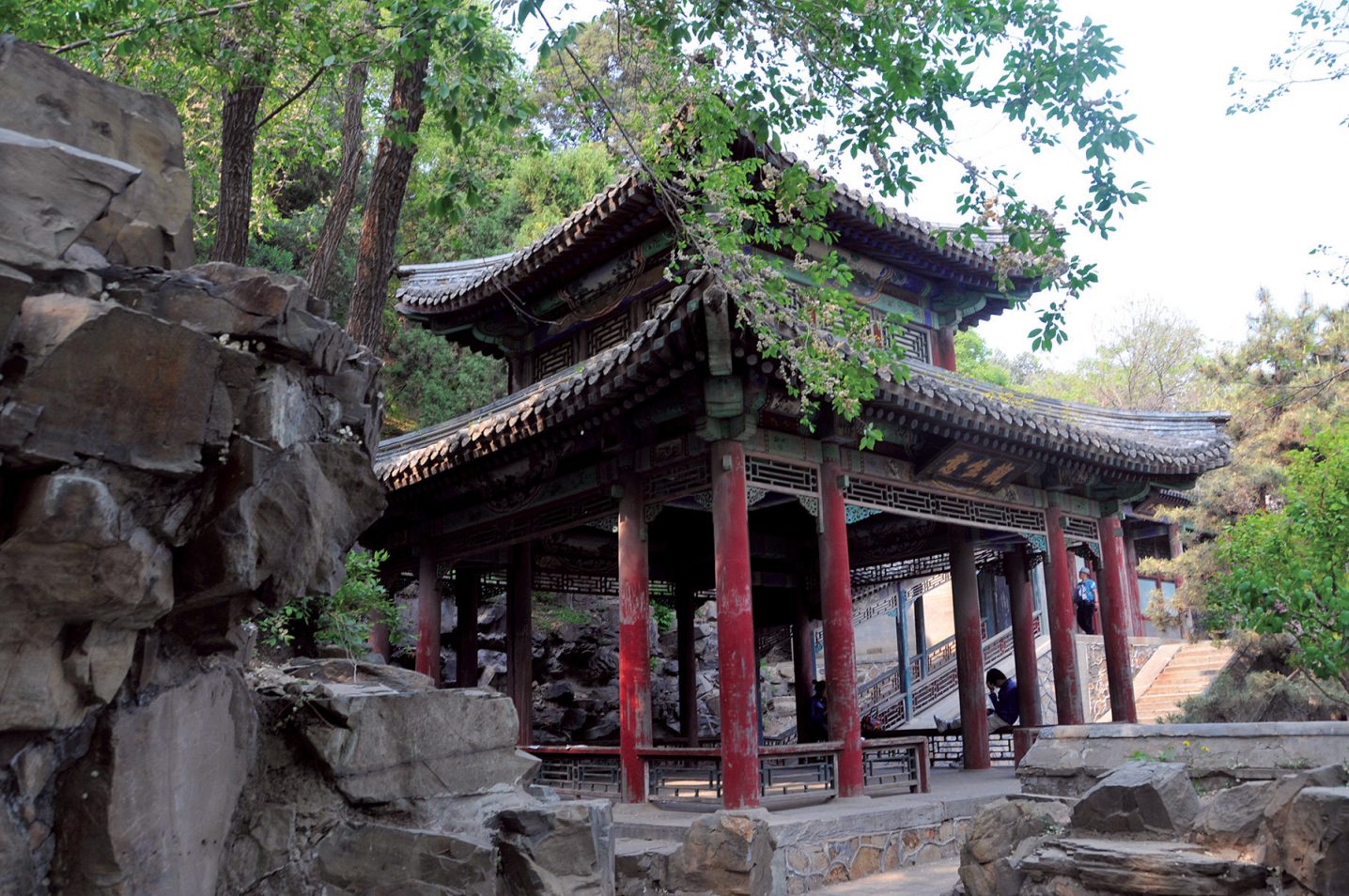
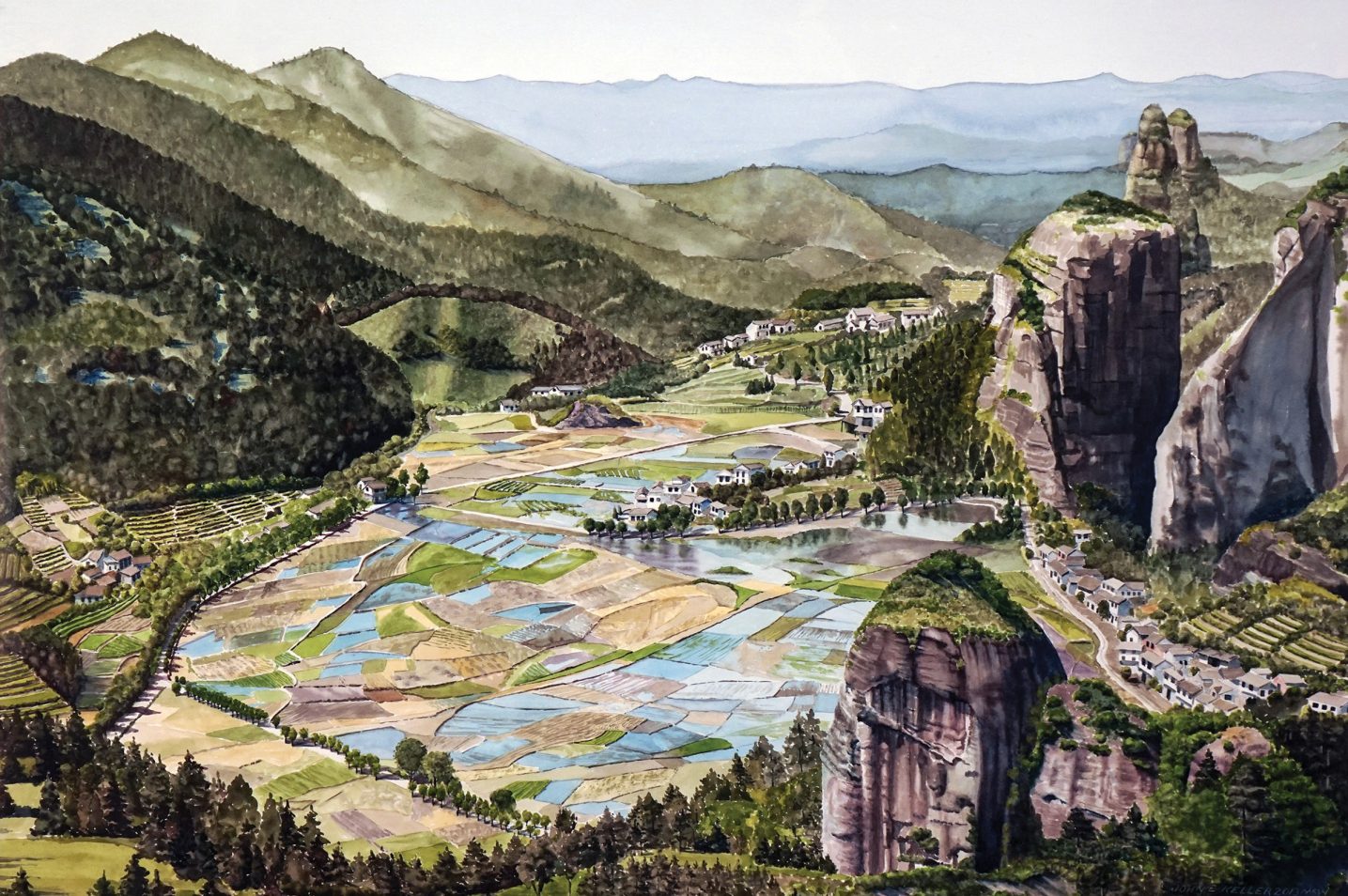
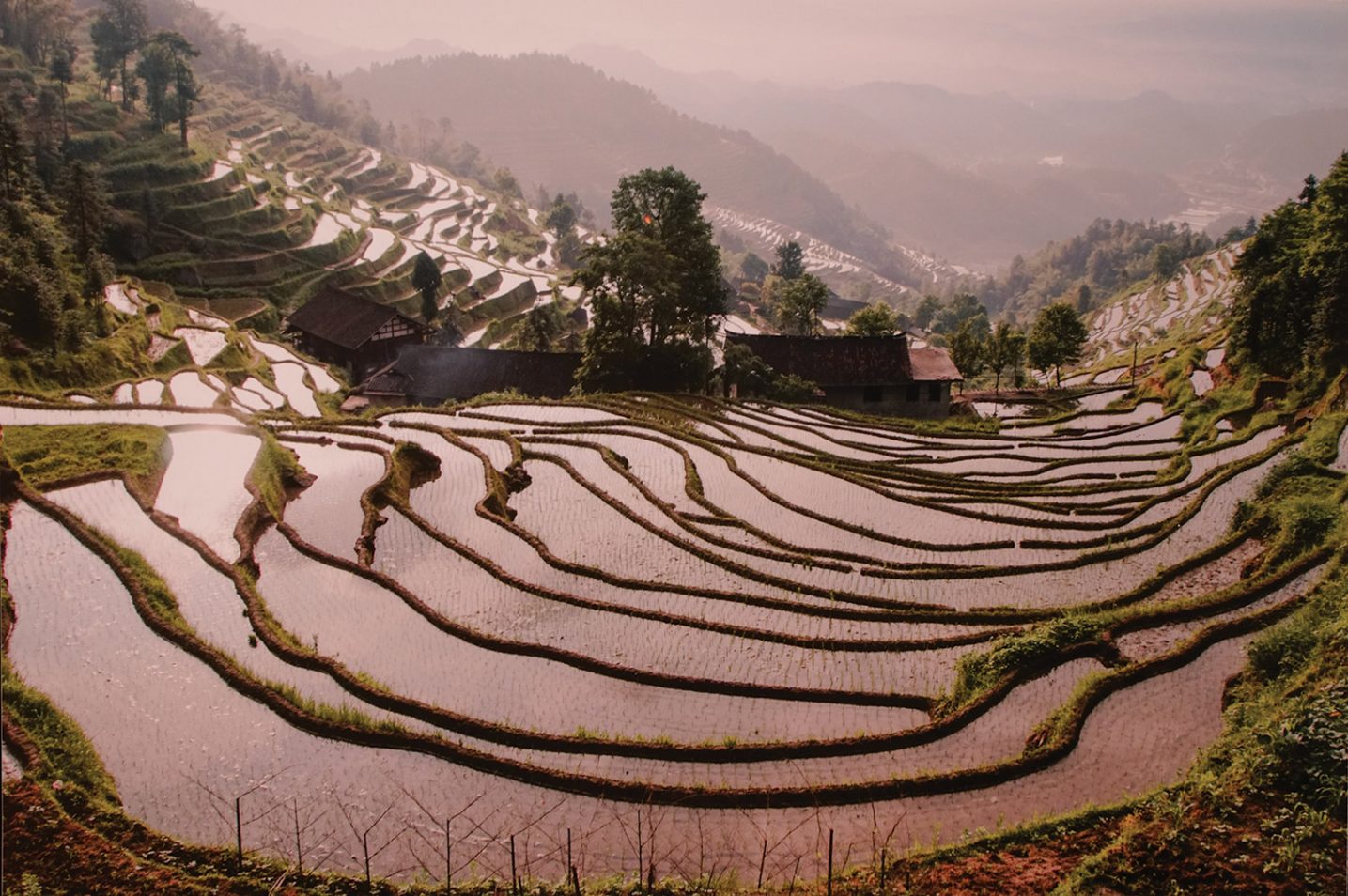
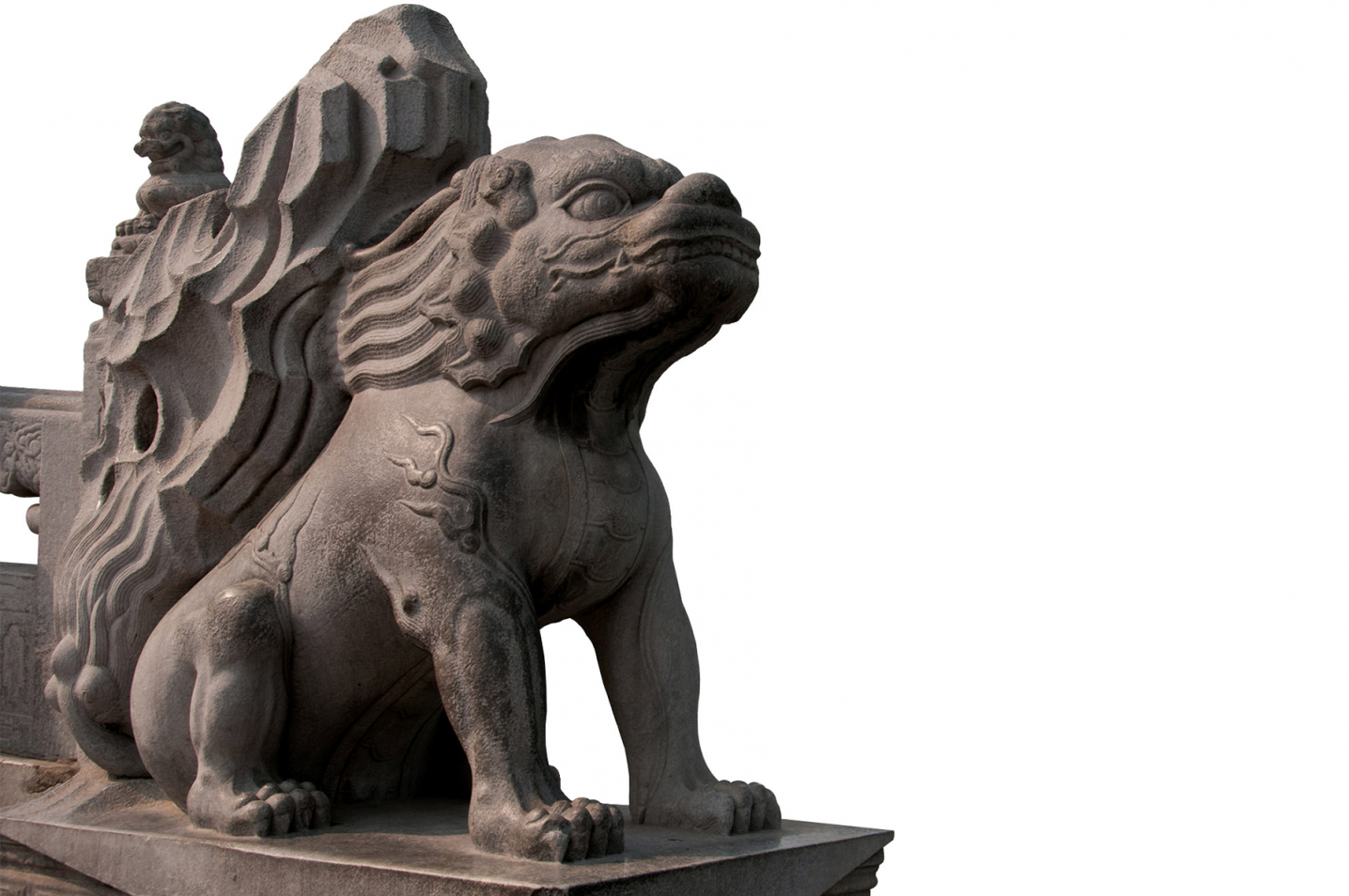
"Langshan Mountains, China"
Watercolor, 2013
In the summer of 2011, I taught watercolor at the University of Art, Science and Technology in Loudi City, Hunan Province, China. We went on a weekend tour of the exotic Langshan Mountains in Ganzu Province. The photographs employed to render this painting were taken from a walkway that hugged the edge of the mountainside. I overcame my acrophobia long enough to enjoy hiking the walkways that were anchored to the cliff sides hundreds of feet off the ground.